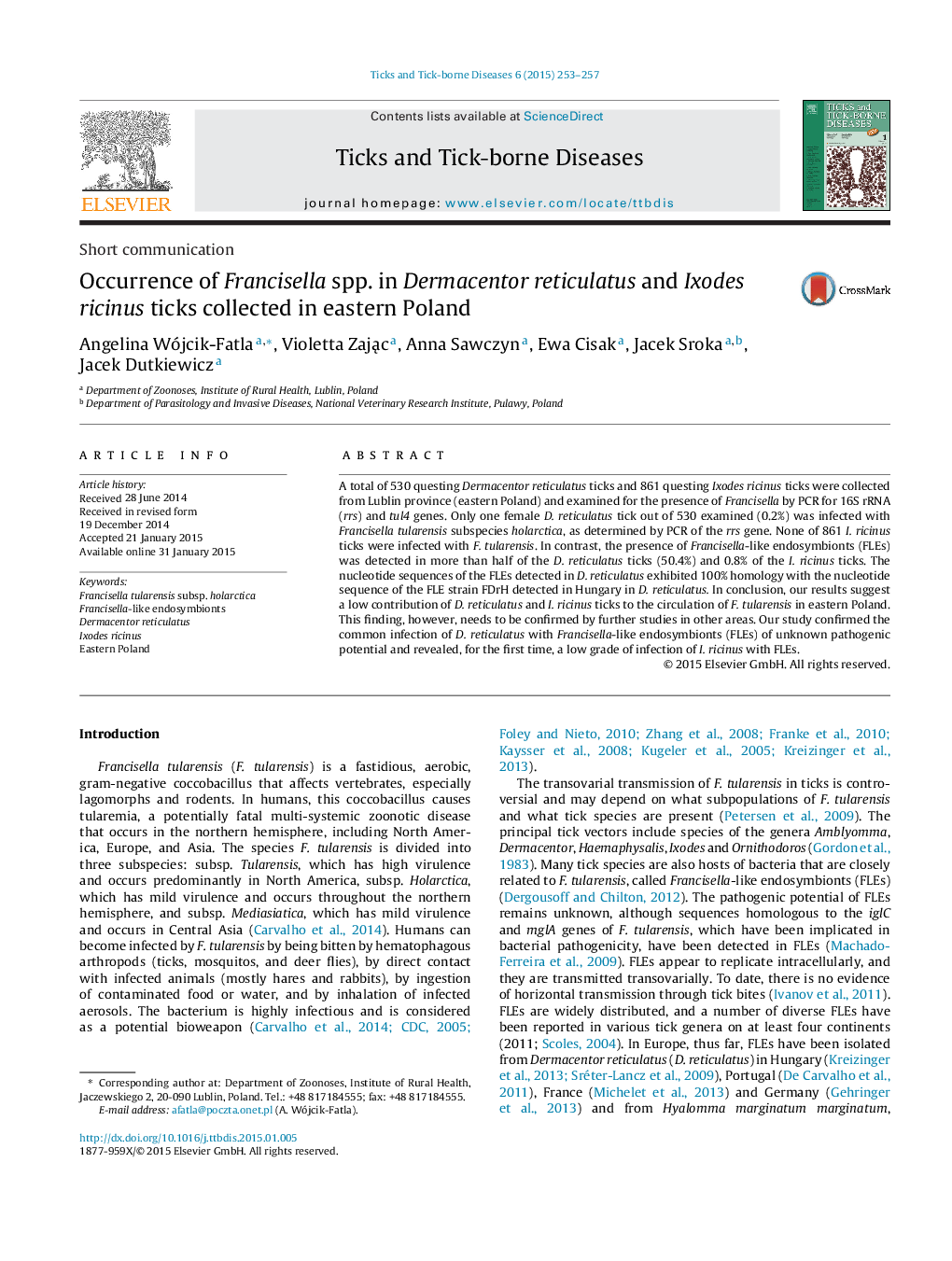| Article ID | Journal | Published Year | Pages | File Type |
|---|---|---|---|---|
| 2473920 | Ticks and Tick-borne Diseases | 2015 | 5 Pages |
A total of 530 questing Dermacentor reticulatus ticks and 861 questing Ixodes ricinus ticks were collected from Lublin province (eastern Poland) and examined for the presence of Francisella by PCR for 16S rRNA (rrs) and tul4 genes. Only one female D. reticulatus tick out of 530 examined (0.2%) was infected with Francisella tularensis subspecies holarctica, as determined by PCR of the rrs gene. None of 861 I. ricinus ticks were infected with F. tularensis. In contrast, the presence of Francisella-like endosymbionts (FLEs) was detected in more than half of the D. reticulatus ticks (50.4%) and 0.8% of the I. ricinus ticks. The nucleotide sequences of the FLEs detected in D. reticulatus exhibited 100% homology with the nucleotide sequence of the FLE strain FDrH detected in Hungary in D. reticulatus. In conclusion, our results suggest a low contribution of D. reticulatus and I. ricinus ticks to the circulation of F. tularensis in eastern Poland. This finding, however, needs to be confirmed by further studies in other areas. Our study confirmed the common infection of D. reticulatus with Francisella-like endosymbionts (FLEs) of unknown pathogenic potential and revealed, for the first time, a low grade of infection of I. ricinus with FLEs.
